In the previous article, we introduced the community archive project “KAGAGA” using MediaWiki.
In this post, we wish to present the workshop “Wikipedia Town – Walking, Researching, and Redacting in Ozuchi” that was held on November 3, 2022.
For this venue, the invited lecturers were Mr. Shohei Arai (administrator of the Japanese version of Wikipedia) and Mr. Hoshi Nakamata (professor at the Department of Management and Information at Kagawa Junior College).
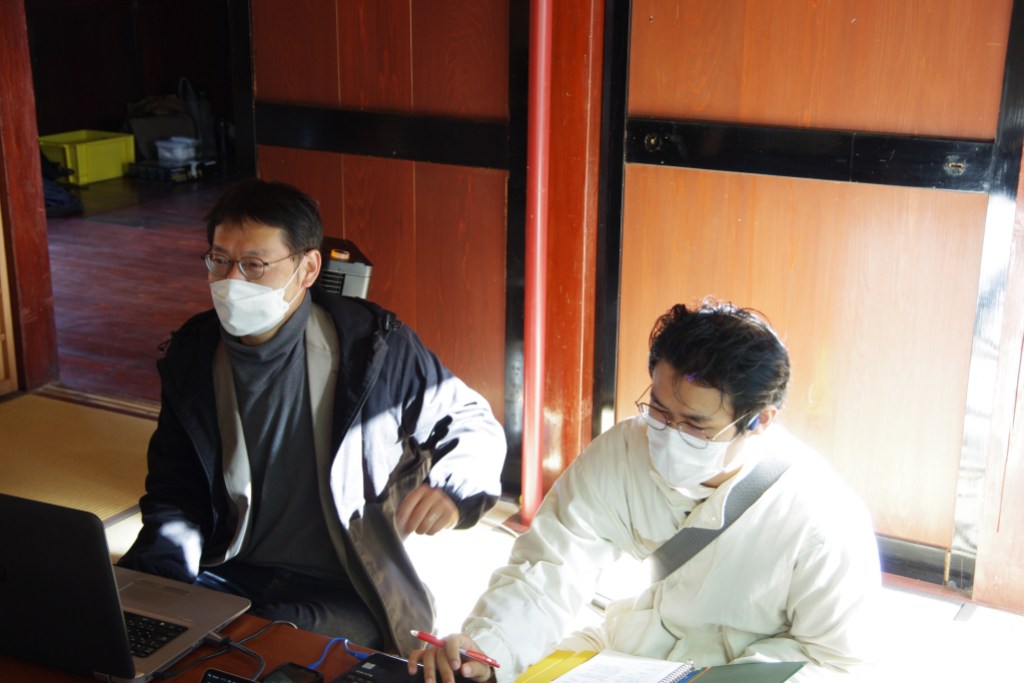
Yamanaka Onsen Ozuchi Town
Located at the far end of the Kaga Higashitani narrow valley, Ozuchi is registered as an Important Preservation District for Groups of Traditional Buildings. Ozuchi is a very unusual community with a permanent population of only one soul: Noboru Nimaida. The town where he was born was on the brink of disappearing when Mr. Nimaida started welcoming young volunteers, progressively building up an international population of non-permanent residents. Owing to the dynamism and manpower he managed to gather, Mr. Nimaida was able to preserve and revive the traditional landscapes and peculiar atmosphere of his hometown.

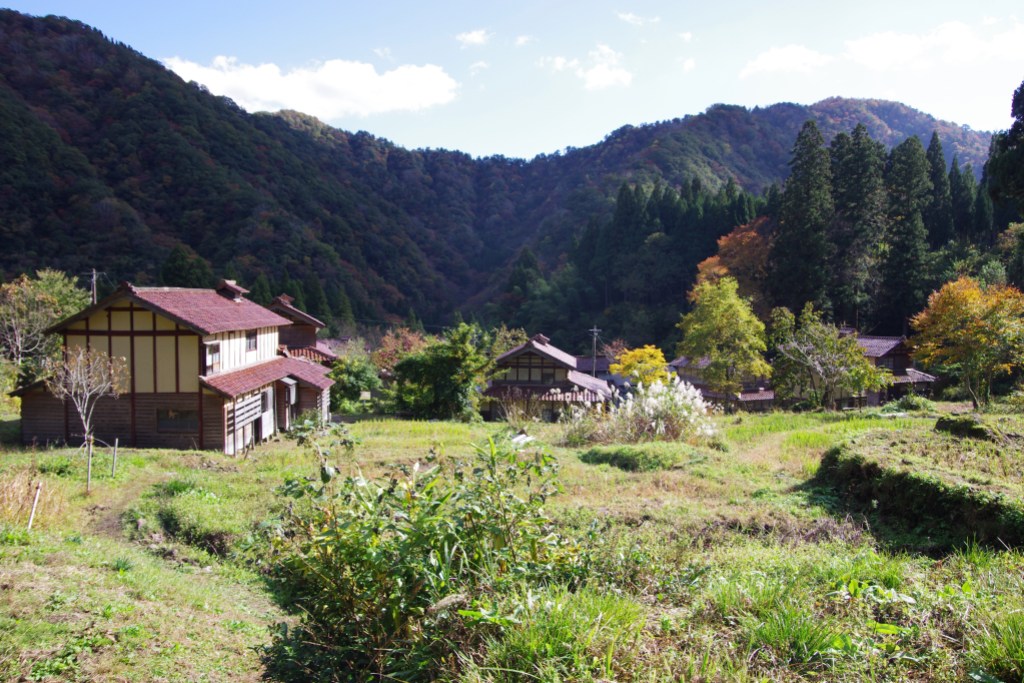
The two main reasons for holding this workshop in Ozuchi.
- Wikipedia didn’t have any article mentioning Ozuchi.
- We wanted to learn basic skills for collaborative editing in the process.
That occasion was the first time for us to edit contents on Wikipedia.
Showing us around
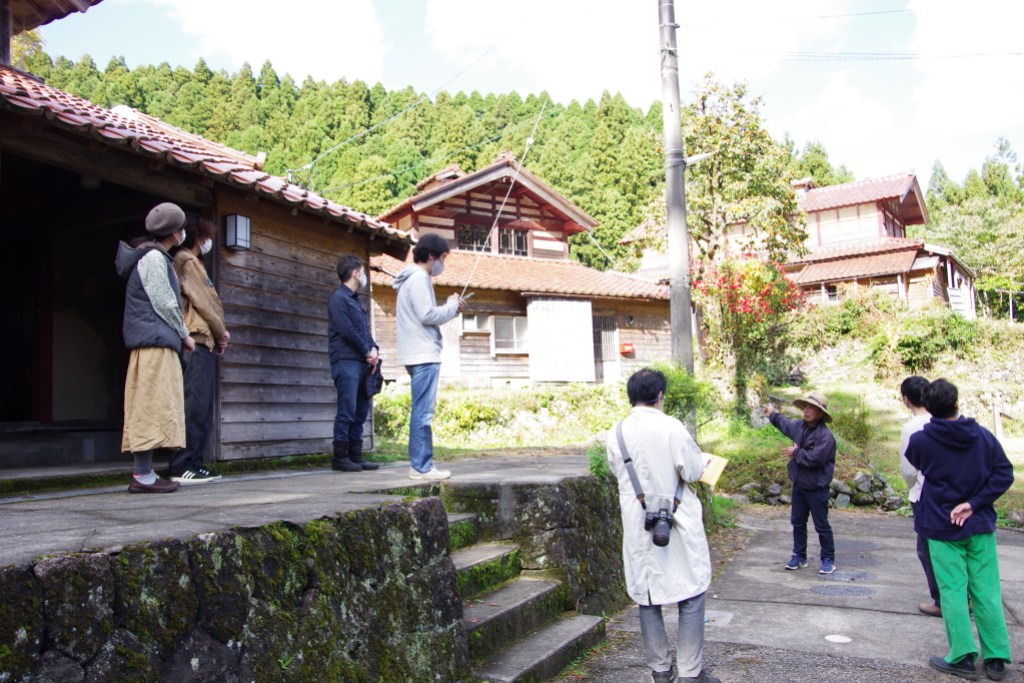

Mr. Nimaida took us for a tour of the area, telling us about the spring water, the construction of the houses and the typical terraced rice paddies. Ozuchi holds no secret for its one and only permanent resident.
Lectures and redacting
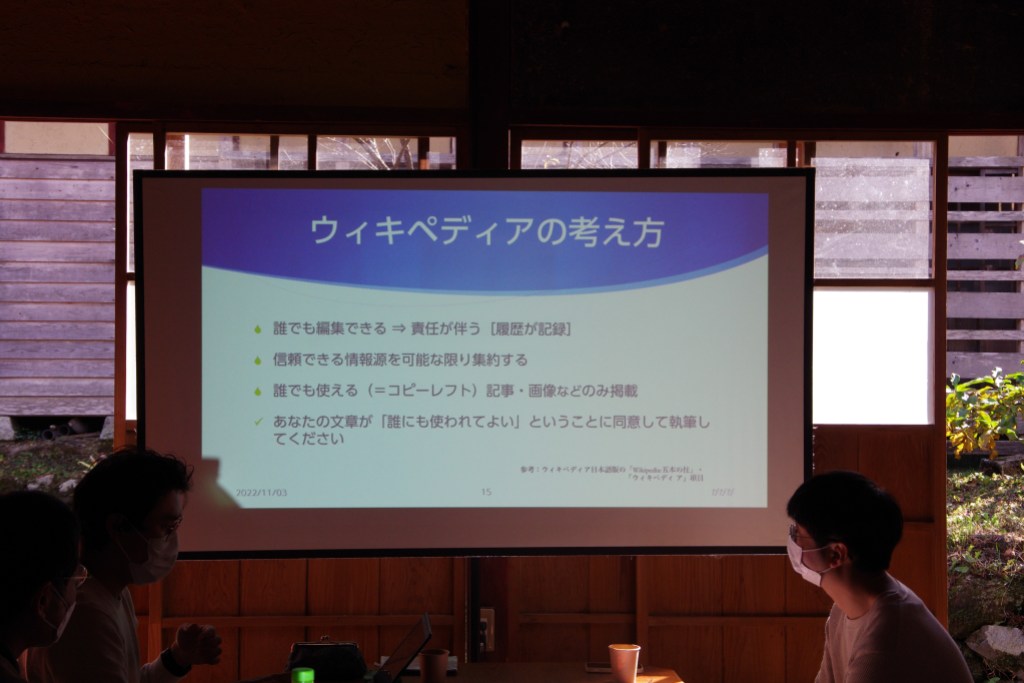
Main points from the lectures
- Try to write adopting a neutral point of view
- Gather together reliable sources of information as much as possible
- Do not publish contents out of individual researches
- Tracking of editing history engages the writer’s responsibility
- Only publish articles and images that are not submitted to any kind of copyrights (i.e., copyleft)
- Agree to write articles that will enter the public domain
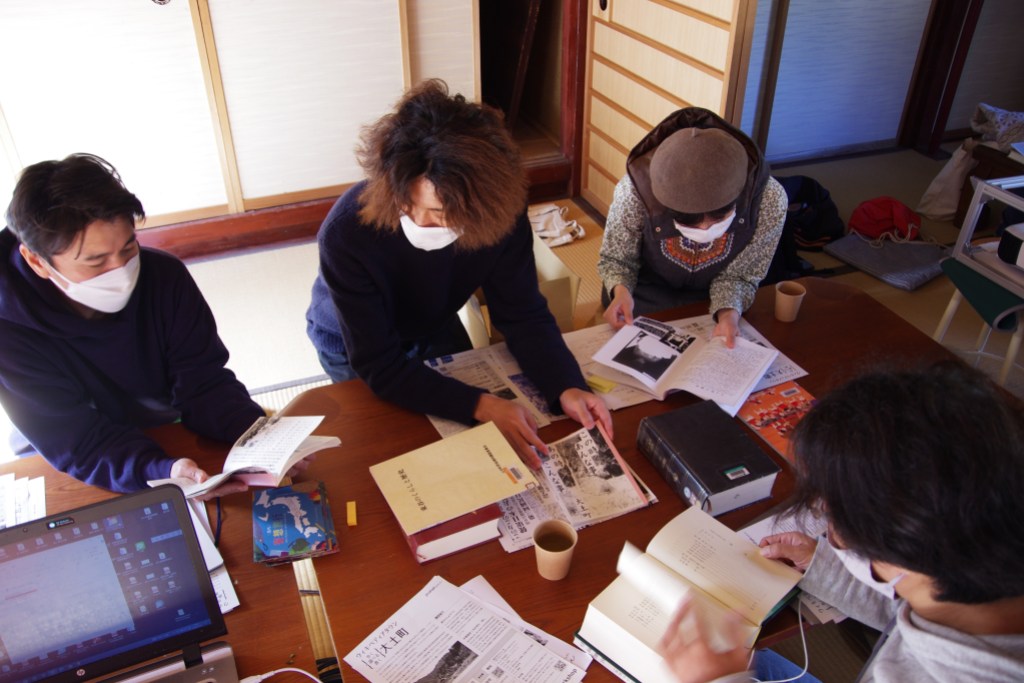
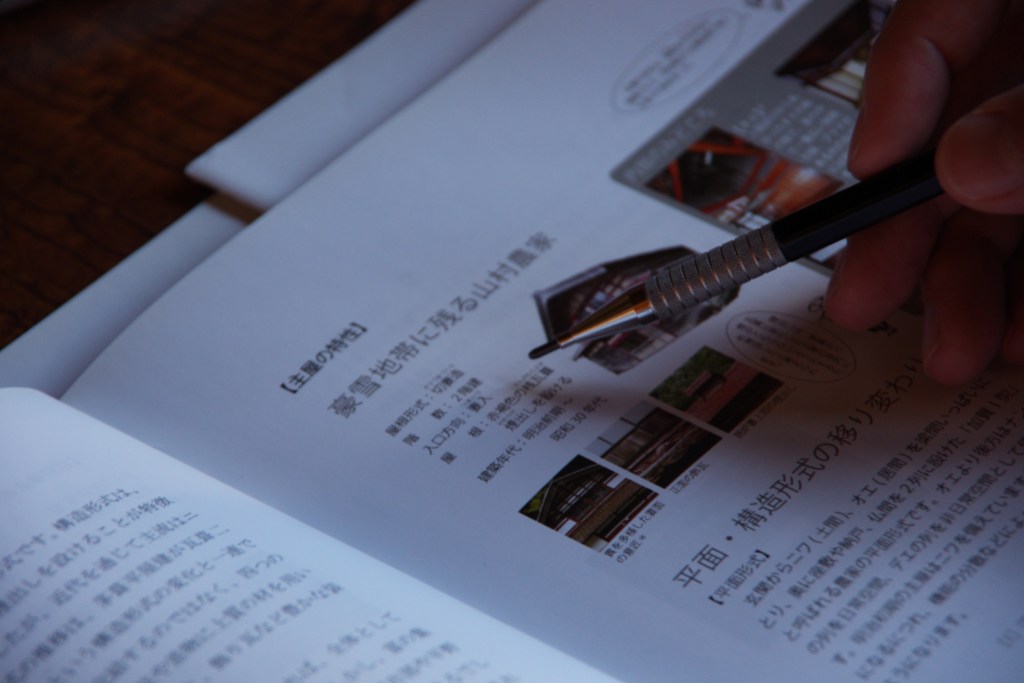
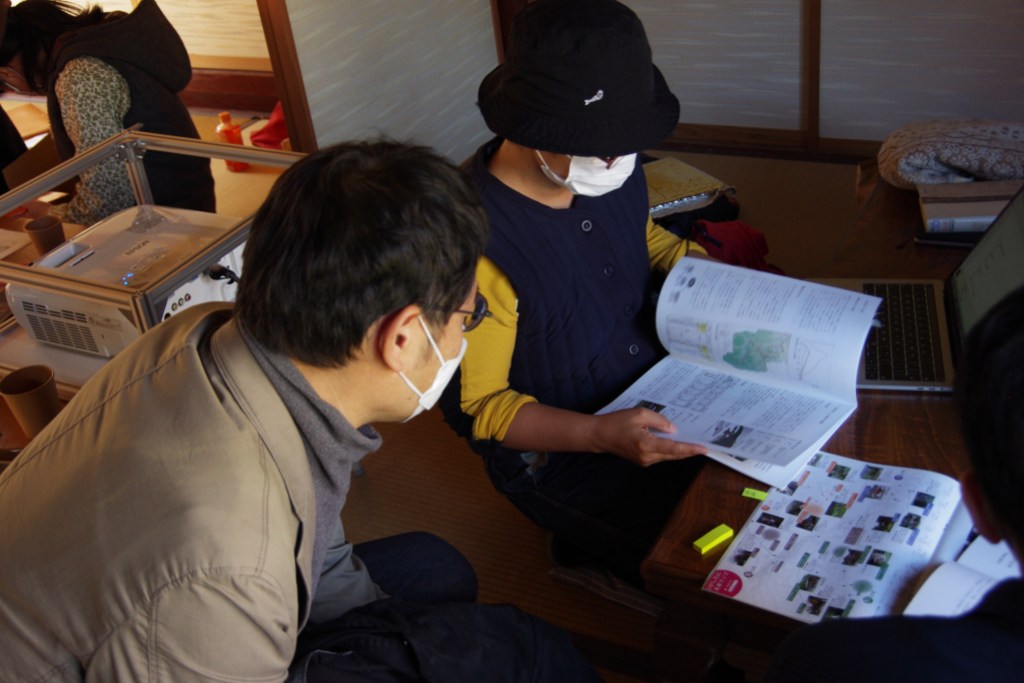
Anyone feeling a bit lost or unsure about the process or given assignments could easily ask questions to the lecturers or exchange views and ideas with the other attendants.
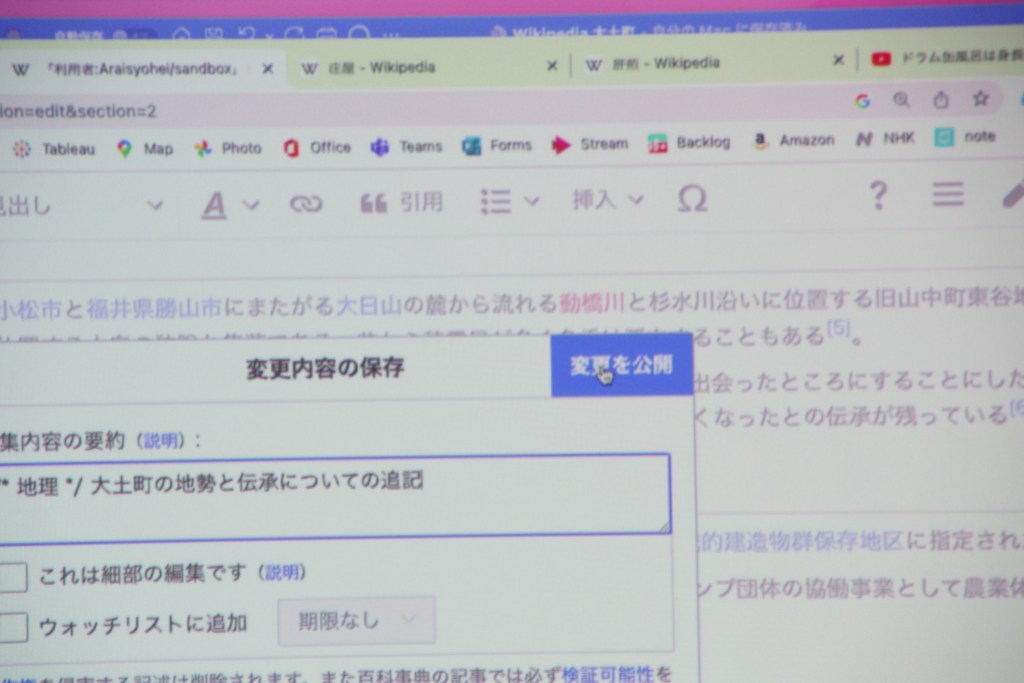
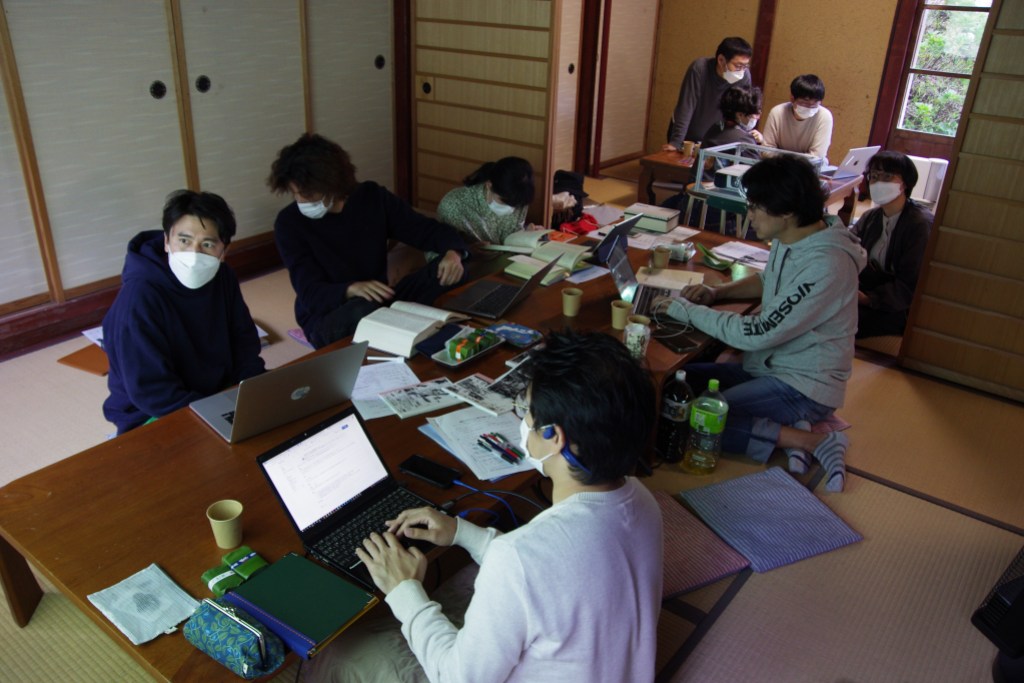
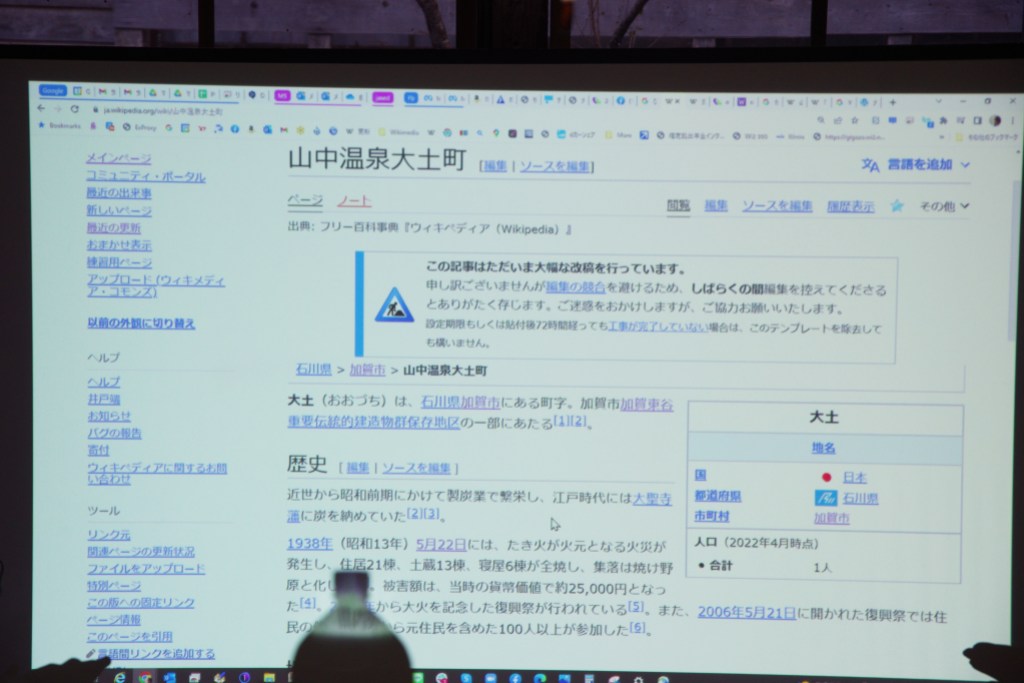
On this day, Yamanaka Onsen’s Ozuchi Town and the area Kaga Higashitani became much more visible and accessible to the public all around the world.
KAGAGA’s present orientation
Holding this workshop made us realize how difficult it is to find relevant materials in a short period of time and write in a way that is perfectly understandable for the many. It did not simply allow us to develop our research and redacting skills, but also provided us valuable training in both logical thinking and IT literacy. We could also foresee the possibility of having a greater number of people from all over the world get to know about the region. Finally we learned that there was a great deal of information that cannot be published on Wikipedia articles.
For example, while books and newspapers are widely considered reliable sources of information, oral traditions, family stories or local residents’ recollections of their lives and experiences are seldom accepted as such. We believe however that it is essential to include such uncertain (in terms of veracity) records in “KAGAGA”. Therefore, we have come to develop a symbiotic approach of both Wikipedia and our own “KAGAGA”, while striving to take advantage of their unique characteristics.
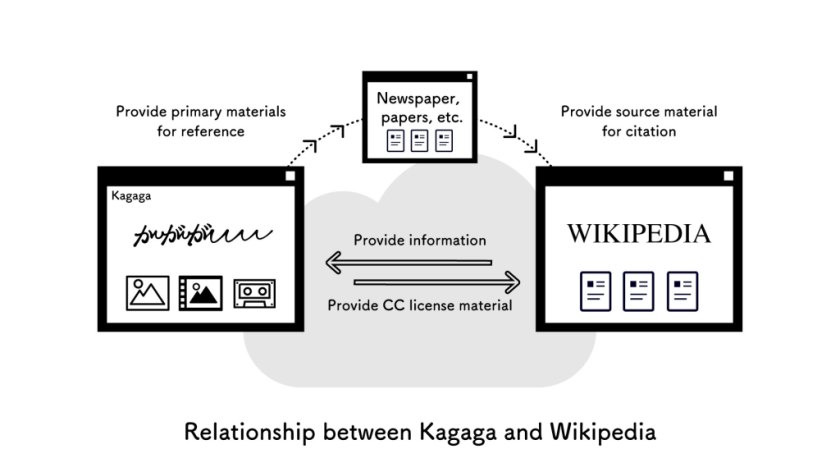
- KAGAGA: Storage space primary materials
- Wikipedia: Index of Knowledge
We use “KAGAGA” to store local materials telling us about past local human activities around.
For example, pictures depicting:
- Memories of a ski resort that no longer exists
- Sumo wrestling tournament that were once held by Lake Shibayama
We think that by adding information answering questions such as “when”, “where”, “who” and “what”, these pictures have the potential to become valuable local archives primary materials.
By putting these materials on Creative Commons, they become usable sources on Wikimedia Commons and various other media such as newspapers, essays and articles. In addition, once the Wikipedia page is complete, information related to “KAGAGA” materials can be obtained directly from Wikipedia, for which KAGAGA materials might prove to be valuable references for articles.
In this way, we hope that Wikipedia and “KAGAGA” will complement and continue to develop in symbiosis, the latest becoming a reliable source of information for those who want to know more about the region.
“Who owns the memory of a particular area?”
This is one of the regular questions underlying our activities. Do the government and mass media have a monopoly in keeping local records and memories? There is still so much of the region’s collective memory that has not been documented yet. And with the number of local newspapers decreasing* year by year, we believe that our project has the potential to play an important part in the task of archiving local memories. This is a trial-and-error project, and we welcome any feedback.
*”地域紙の廃刊・休刊が全国で続々と、”新聞が消えた”地域は何が起きるか (Regional newspapers are being discontinued and ceasing publication one after another across the country; what will happen to areas where newspapers have disappeared?)” Article in Japanese by independent journalist Tai Takada
“KAGAGA” and the future of Kaga City
The Hokuriku Shinkansen bullet train line’s extension to Kaga City is scheduled to open in the spring of 2024. In case you already had the opportunity to visit the area, we would be happy if you could write about things you learned about Kaga on Wikipedia. We also plan to hold other Wikipedia Town sessions in the future and we will keep you up-to-date with the latest information through our website and social networks.
You can follow us here:

Can you help us translate this article?
In order for this article to reach as many people as possible we would like your help. Can you translate this article to get the message out?
Start translation